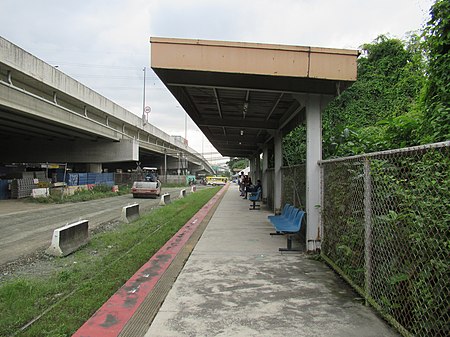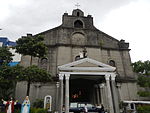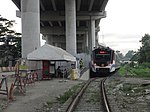10th Avenue station (PNR)

10th Avenue station (also called Asistio Avenue station) is a railway station located on the North Main Line in Caloocan, Metro Manila, Philippines, near the original Caloocan railway station. The station was meant to be a part of a revived commuter rail system, built during the term of Gloria Macapagal Arroyo. After being constructed, no services to this station were ever provided until August 1, 2018, when it was opened for the Caloocan-Dela Rosa shuttle line. The northbound line is temporarily dismantled to give way for further works in NLEX Segment 10.1, and is currently a temporary single-line track. It was the terminus of said line until the clearing and recondition of the rails in the Caloocan station at Samson Road finished. The line has since been upgraded to terminate at FTI station, with this station no longer the terminus since September 10. Due to nearly a decade of disuse since its construction, the station has been weathered and its gate barriers no longer functioning. It did not have running electricity until shortly after its reactivation. The gate barriers for the northbound street was made functional again along with its alarm horns thereafter.
Excerpt from the Wikipedia article 10th Avenue station (PNR) (License: CC BY-SA 3.0, Authors, Images).10th Avenue station (PNR)
NLEX Harbor Link Segment 10, Carabaocanibal Grace Park West (District 2)
Geographical coordinates (GPS) Address Nearby Places Show on map
Geographical coordinates (GPS)
| Latitude | Longitude |
|---|---|
| N 14.651597222222 ° | E 120.97486944444 ° |
Address
Asistio (10th) Avenue
NLEX Harbor Link Segment 10
1406 Carabaocanibal, Grace Park West (District 2)
Philippines
Open on Google Maps









